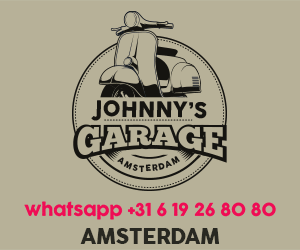
Bike paths: The Netherlands is covered with them, connecting more or less every destination a person might wish to go to and greatly increasing the convenience of cycling as a sustainable mode of transport. In the densely populated country, where space is scarce, a consortium of companies and research labs called SolaRoad is endeavoring to make those cycle lanes reduce carbon emissions in yet another way: by having them to generate solar electricity.
In 2014, SolaRoad started its pilot project in the town of Krommenie near Amsterdam by replacing a stretch of 70 meters of a tarmac bike path with solar modules it developed. The embedded solar panels are protected by a 1 cm thick coating, which is highly transparent but does not compromise traction. The project attracted great attention, both inside and outside the Netherlands, and within the first year after the solar bike path opened, 300,000 cyclists and scooters rode over it.
Despite the difficulties paired with embedding solar panels in a road, such as the flat angle in which the modules are positioned, the thick layer of protection glass covering them, and the high numbers of travellers passing over and blocking the sun, the amount of power generated quickly defied expectations. Already half a year after the cycle lane was inaugurated, SolaRoad sent out a press release stating that, with 3000 kWh generated, the solar panels were outperforming the 70 kWh annual per square meter expected threshold set in the lab. In its first year, the SolaRoad produced 9,800 kWh, roughly equivalent to the annual average consumption of three Dutch households.
To accommodate for testing new modules that incorporate innovations inspired by the first 70 meters of SolaRoad, the project was expanded by 20 meters in October 2016. Some of these modules contain thin-film photovoltaic panels. Furthermore, the coating of the new modules has been improved.
The project near Amsterdam will continue till 2018, with the goal of further development and testing of the SolaRoad modules that convert the sun’s energy to electricity while facilitating bike travel. SolaRoad has meanwhile launched the SolaRoad Kit — 10 meters of solar bike path that can be ordered by companies or governments. The province of Groningen in the northern part of the Netherlands has already bought a kit, which will be in operation in a month from now.
SolaRoad Netherlands from SolaRoad on Vimeo.
Another interesting development is the announcement of a cooperation with Californian road authority Caltrans and the Dutch province North-Holland to develop a second pilot project in Lebec, Kern County. Since the announcement last March, however, no details on what the project might look like have been revealed.
Although per kWh cost figures are unknown, it is very likely that the electricity produced by the SolaRoad is relatively expensive, especially due to the small scale and novelty of the project. Surely, it cannot compete with normal solar power generation, such as from rooftop solar and solar farms, but the point is that such solar bike paths compete with the cost (and no direct revenue) of conventional bike paths, not other solar installations. As research continuous and enthusiasm coming from many different sides accrues, larger-scale projects could emerge, and we could get a better sense of how viable this idea is. Economies of scale would drive down costs, and suddenly, solar bike paths could no longer be a curiosity. Maybe.
To reiterate: the SolaRoad does not have to reach cost parity with rooftop or utility-scale solar, but the more solar electricity we can generate via cost-competitive means versus the alternative, the better. If we were to travel a decade or so into the future, most available rooftop space might already be covered. So, to further increase solar generation capacity at that time, either land reserved for agriculture or nature would have to be used, or surfaces such as bike paths could be considered.
In densely populated countries such as the Netherlands, geographers are already warning about the burden large-scale solar power plants could place on land available to other uses. Converting gray tarmac into solar highways would be a logical alternative, provided the cost difference is limited or positive.
SolaRoad is not the only consortium in the world working on this type of project. In the US, Solar Roadways is working on high-tech roads that produce electricity and can, among other things, de-ice themselves. Unfortunately, their prototype in Idaho has suffered from severe technical issues, recently even requiring intervention by firefighters as smoke started to come out of an electricity box on the test site.
Another example is located in France, where a one-kilometer stretch of roadway has been covered by solar panels by construction company Colas. This “Wattway” is the start of a controversial plan to convert a staggering 1,000 kilometers of French streets into solar roads.
Electricity-generating roads haven’t left the experimental phase yet, and are very probably not cost-competitive with conventional roadways at this point. But as the rate of innovation is high, and public enthusiasm big, we shouldn’t be surprised to see more SolaRoads in the coming years, possibly of much larger scales than now deemed feasible.



